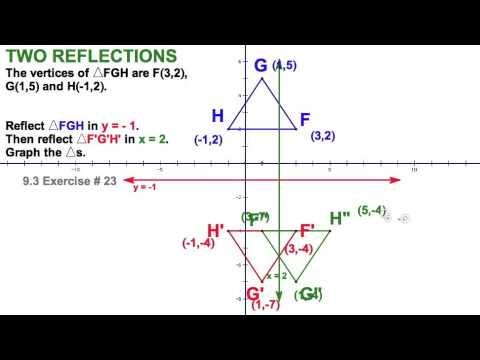Double reflection
Definition
Double reflection, also known as the optical phenomenon seen in single polarization. When the turntable changes the orientation of the object, some objects can be observed to observe the change in brightness (reflectance), which is the "bireflectance, bireflection" of the object.
forming mechanism
Double reflection formation mechanism, generally believed that the non-homogeneous object double reflection depends on the relative dual reflectivity (ΔR ') of the object, and the object The absolute double reflectance (ΔR) is not too much relationship.
R 1 and r 2 is the maximum (highest) and minimum (lowest) main reflectance of the object.
Observation method
Double reflection and reflection multi-color properties are reflectance and reflectance changes in the azimuth of non-homogeneous objects, so requiring a single polarization in the microscope Observe under conditions.
Convert the chart at this time, observe the change of the individual particles or collections of the object to measure the substance and color of the color. When the aggregate is observed, the contour of different particles can be seen in the orthogonal polarization. After the boundary, the double reflection and reflection multi-color properties are observed by single-polarizing and reflective multicolority
object double reflection and reflection multi-color The visual grading can generally be divided into special strength (a single grain is particularly remarkable), which is remarkable (a single grain clearly visible), clear (multi-particle aggregate is clear), weak (multi-particle set body hidden can be seen), no The multi-particulate aggregate does not show the difference between brightness and color in the immersion oil).
Observing under high quality ore microscope, due to the high optical imaging, the degree of single-polarized polarization is high, and the light source strength can make the weak brightness and color change and can distinguish the level.
Combined with the conditions of the general teaching laboratory (the quality of the teaching microscope) adopts a coarse two-stage visualization classification:
i. Visible - Observing a single crystal grain or multi-particle assembly in the air in the air, a single crystal grain or a multi-particle assembly can show the reflectivity or reflective color variations at the level;
II. No. - The brightness and color variations not shown under the above conditions belong to this level.
In actual production and research work, due to a more precise microscope and use soaking oil, the double reflection and reflective multicoly grading are complex (three, four or five levels) . Moreover, it is also possible to quantify the precise numerical value of maximum and minimum reflectance and the color index x, y, r VIS , λ D , p e It is exactly a feature of dual reflection and multi-color multi-color properties of the object.
Polarized beam prism
polarized beam mirror is an important device commonly used in optical techniques. Its basic function is to convert a beam of light into a plane perpendicular to each other. polarized light. According to different working principles, people have successfully successfully successfully successfully successfully successfully successfully successfully developed, such as various prism-type polarizable beams made based on birefringent phenomena in single-axis crystals, based on multi-layer dielectric film Thin film polarized beam mirror made of inner interference effect. Polarized beam prism - duplex double reflection polarized beam prism. It is vibrating each other when the incident light is reflected in a single axis crystal. 0, E light is separated from the space, thereby achieving a bias bundle. In addition to the characteristics of a general prism-type polarization beam, such a polarized beam is selected to have a striped angle, and the polarization beam is simultaneously achieved by about 90 °, so it will be in optical technology. Will get a wider range of applications.
Structure and Principle
Figure 1 is a structure simple figure. It consists of two single-axis crystals, so it is called a duplex. The first crystal optical axis is perpendicular to the incident end surface, and the second piece of crystal optical axis is in the exit end surface and is perpendicular to the first block optical axis. The prism reflect surface Ba and the incident end face angle are 45 °. After entering the beam into the first piece of crystal, there is no birefringence before the propagation of the optical axis reaches the prism pendulum AB. In the BA interface, the full internal bispress is decomposed into O, E two partial plane polarized light. The two polarized beams enter the second crystal in the divided interface BD, and the original O light becomes e-light, and the original E light becomes. The result of the light refraction further enlarges the strings of the two beams (Fig. 1), and finally the two beam lights are again refranous when the end surface is introduced into the air, and the strands are once again expanded. Therefore, after the incident beam is divided into two beams of planes having a large bundle angle after the prism. The strand of the prism is given by the design parameters, the relationship between the knife is given by the following relationship. According to Frescel's law, O, E two beams should satisfy the reflection law of the reflection of the prism beam double reflection, which is
where A is the normal of the E-wavefront and the clip perpendicular to the optical axis direction. The angle is the refractive index of the e-wave wave along its optical wave.
Two-reflection beams should meet the form of refractives in the interface BD, and the form of the refractive zero is:
finally in the exit end surface, two beams further fold, satisfying equation: < / p>
Two beam split angles, that is, the prism beam angle is:
to obtain a large split angle, O, E two beams must be reversed in the direction of the exit end surface, At this point, the angle must be satisfied:
For a given design parameters, the corresponding beam angle can be set.
Related Application
This concept is mostly used for minerals. If the mineral reflection color changes are changed, the mineral reflection is changed to the mineral.

In fact, if a modern precision instrument is used to measure minerals other than any equipotrophone, any cut surface other than the homogeneous section is different when the mineral position is changed in the changing mineral position, and its reflection Color color index will also be different. However, the observer's vision can only see some mineral display double reflection and reflection multi-color properties under the mineral microscope.
Colorless class and weak color minerals only observe double reflection, significant color minerals mainly observe multi-color nature, because the observer is not high enough to be highly sensitive. Double reflection of minerals, the difference in reflection multi-color nature is an important symbol of mineral identification.
Some mineral double reflection and double amplitude multi-color examples are as follows:
| mineral | Ordinary intermediate color | low main reflectance color | < Td width = "174"> copper blue | Blue | deep purple blue
| Blue White | deep olive green gray | Light blue gray | Pi-molybdenum ore | White to gray | white gray | White | Polygonal 矿 矿 | Various brown gray | pink brown | white | |
| Hui 矿 矿 | yellow white | Yellow white | |||||||||||||||
| Light red mine | blue white to green white | Blue gray | yellow white | ||||||||||||||
| Various brown yellow | Pink brown | brown yellow |
Latest: EDI knowledge and application
Next: Hydrological statistics








